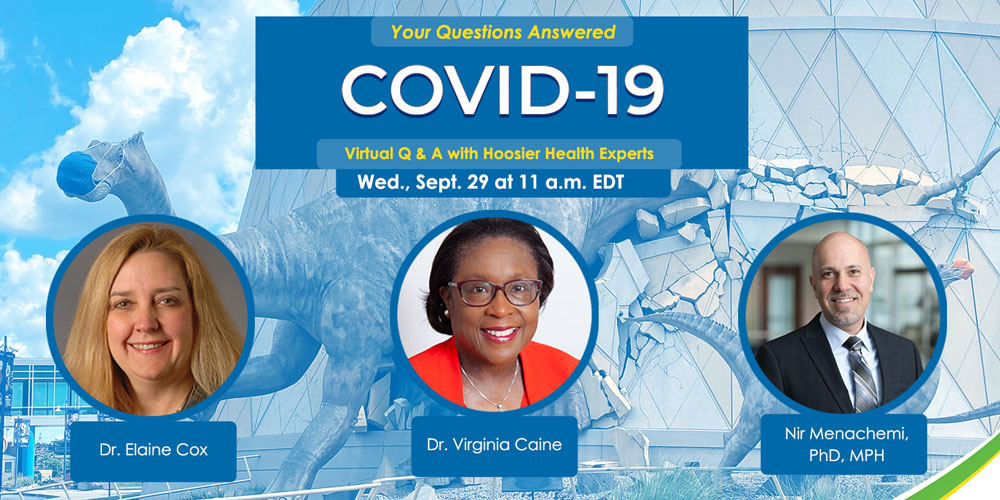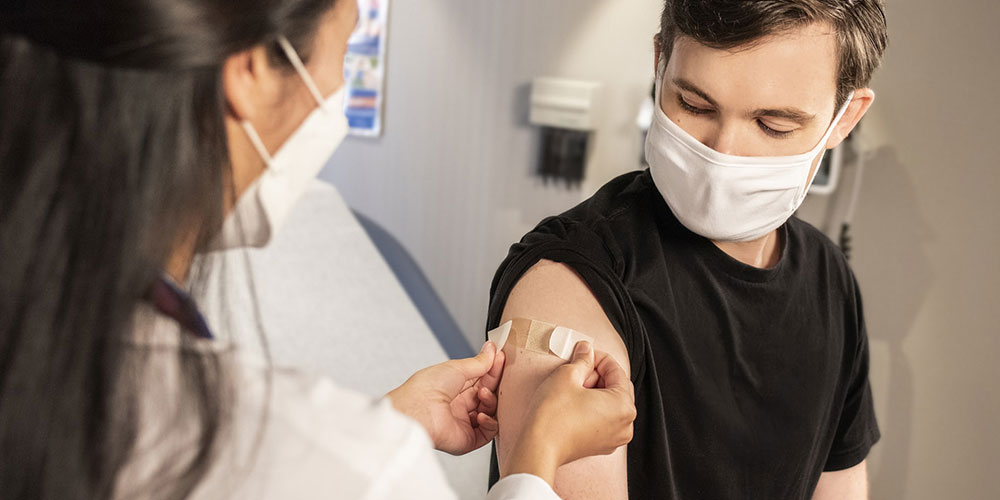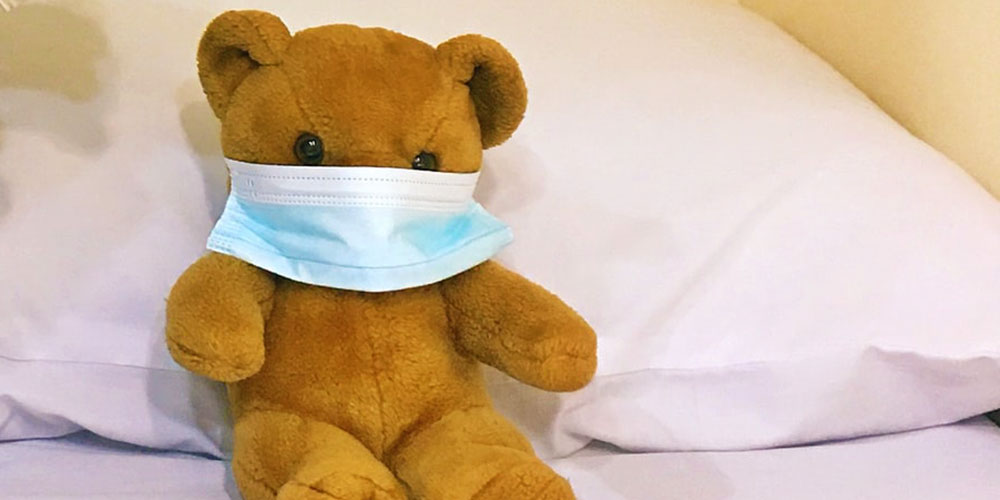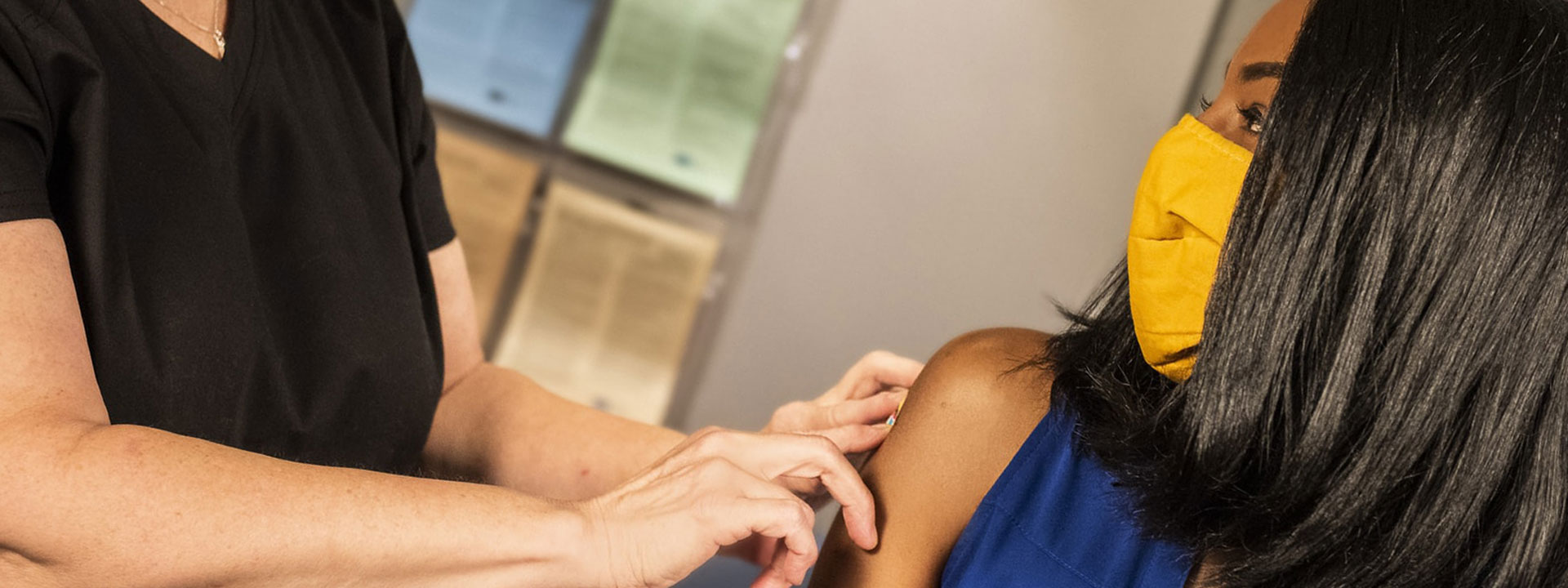On Oct. 5, 2021, The Children’s Museum will host a free COVID-19 vaccination clinic. You can find out more information here.
On Sept. 29, 2021, The Children’s Museum hosted a panel of medical experts to discuss parents’ concerns surrounding COVID-19 so you can make informed decisions for your family.

Moderated by our own Chief Information Officer Kathy Mathena, RN, MSN, this powerhouse panel was made up of these experts:
- Dr. Virginia Caine
Director of the Marion County Public Health Department - Dr. Elaine Cox
Chief Medical Officer at Riley Children’s Health
Associate Professor of Medicine, IU School of Medicine, Infectious Disease Division - Nir Menachemi, PhD, MPH
Chair of Health Policy and Management Department of the Indiana University Richard M. Fairbanks School of Public Health
Scientist at the Regenstrief Institute
While we encourage you to watch the video or read the full Q & A, here are five key takeaways from the medical panel’s discussion:
1. The vaccine is safe for your 12-year old.
“I would recommend vaccination without hesitation.” - Dr. Cox
“My job is to do the research, to scrutinize the data, to understand what the implications are and my family has made the decision (to have their 11 year-old vaccinated as soon as she is eligible).” - Dr. Menachemi
“I would strongly encourage anyone to get their children a vaccine. This is probably one of the most effective tools to protect your loved ones.” - Dr. Caine
When it comes to new drugs, vaccines, or interventions, we don’t usually have more than a few thousand participants in clinical trials. This is a little different because of the worldwide concern. As a result, tens of thousands of adults have participated in studies. When we got to the younger age groups, we had less, but we also did additional studies comparing the younger kids with the young adults, to see if their bodies were responding differently. We got some really good, really reassuring information that the 12–18 year olds were behaving in a physiological perspective almost the same as the 19–20 year olds, who were part of the adult trials.
We are not leaving any stone unturned with our younger children. This is too big of an issue, too big of a concern, and too dominating of a topic to mess this up. Don’t focus on how many people are in the trial. There are additional studies above and beyond what we usually do because this is a worldwide pandemic.
When you consider the hundreds of millions of doses that have been given, the amount of side effects we’ve seen with this vaccine is extremely small. Yes, there have been reports of myocarditis—heart inflammation—what you see in this very small amount of children who get those side effects is much less than the myocarditis we see in children who actually get a severe COVID infection. In addition to the rarity of all of those side effects that are being reported, they’re also very attenuated, meaning they are very weak compared to those same effects of getting the natural virus. While these side effects do occur and are concerning, the COVID-19 vaccine has been found to be very safe and extremely effective—especially if your child has any other health issues or concerns.
2. Your body is like a castle.The vaccine is your battle plan.
Imagine each of our bodies as a castle. You have drawbridges and windows and other elements to protect your castle. If there is a surprise attack from a new enemy that you are not aware of. If your castle is vulnerable—the drawbridge is down, the windows are open, none of the guards are ready to fight—any attack can have a devastating effect.
Do you remember what they called this when it first came out? We called it the novel coronavirus. It was a new enemy that no one’s body knew how to protect against.
So what the vaccine does is basically tells your castle, “Let’s be ready for an attack so that we can minimize the damage of the enemy and minimize the amount of time it takes to get rid of the enemy. We’ll have the drawbridge up, the windows closed, and we’ll be less likely to have the enemy come in. And if they do, they’re not going to go very far.” The vaccine prepares you with the lesson on how to defeat this enemy when you encounter it in the wild.

3. Masks are still recommended at this time.
No vaccine has a 100% protection rate. You’re still vulnerable. Because this virus has mutated and is a little different from the original strain we produced the vaccine for, it’s important to wear your mask. This is to help prevent further infections. Masks are critical.
The only way to prevent hospitalizations and deaths in the unvaccinated is to reduce the amount of spread in the community. The only way, other than vaccines, to reduce the spread is through masks, hand hygiene, and social distancing.
“Masks are necessary, unfortunately, because vaccination rates are lower than they should be. Vaccination rates and the need for masks go hand-in-hand.” - Dr. Menachemi
4. The COVID-19 vaccine helps prevent deaths.
If you don’t like the castle analogy, think of the vaccine in terms of car seats or seat belts in a car. For a little bit of time, you could probably get away without using them—even though everyone knows you’re supposed to use them. But why take that risk? One of the leading causes of death in children is car accidents. If more people took that risk of not using seat belts and car seats, even more children would die. One of the easiest ways to prevent childhood deaths in car crashes is to use seat belts and weight-appropriate, age-appropriate car seats.
Vaccines are the same way. They help prevent deaths. Why take a risk if you don’t have to?
5. It’s important to talk to your kids about the virus.
It is important to include your child in COVID-related conversations. They are hearing about it in school—even preschool. Their friends are talking about it. Without information, children are frightened, because they hear everything and they absorb what they hear.

So they try to piece it all together—frequently through play. We’re starting to see children playing games about having COVID. That’s how they process information. Try using a doll or a teddy bear to discuss how infections happen. This can work very well with children.
Stick to conversations like this:
- “Sometimes, people get germs. And when people get germs, sometimes they share their germs. The way we don’t share our germs is by covering our mouth when we cough, washing our hands, and wear your mask. We do that so we don’t get sick or make others sick.”
- “When people get sick with this germ, they have to stay home until they get better. We can’t see them while they are getting better.If they get too sick, they’ll go to their doctor. Their doctors will do all kinds of things to help them get better.”
- Kids know all about vaccinations. They get about 18 vaccinations within a period of a couple of years. They understand that you get those shots to keep from getting sick.
- “We just have to understand how this shot works in a little person’s body and find out if it works the same as it does in an adult’s body. Doctors are studying that and you will be able to get the COVID shot as soon as we can. Because we want to keep everyone safe.”
For parents, it’s important to know that children are considered part of the vulnerable population category when research is conducted. We are extra-careful about children being enrolled in clinical trials and managing their safety profile. There are certain populations where, because of their age or other vulnerability, we know we have to be extremely careful. In all things, we go above and beyond when it comes to studying these things in children.
Frontline healthcare workers need our help
“I wish I could take (you) on a field trip to just walk through what it feels like to work in a hospital right now. You have doctors and nurses who are physically and emotionally exhausted. They’ve been working night and day with around the clock shifts. Everyone has had a tough time with this, but frontline healthcare workers have had the rawest deal that the virus has wrought. And almost all of the patients that are the sickest of the sick in the hospital could have been prevented easily. And so, doctors and nurses, who devote their entire careers to try to make it so people are better off with their health, and there is nothing more demoralizing than having to constantly deal with things that are senseless.It shouldn’t be happening. We can prevent and not worry about, and move on to focus on other things. And we’re at the point now where we’re not taking in cancer patients or heart attack patients because we’re overwhelmed with COVID patients who can be vastly preventable.” - Dr. Nir Menachemi
Need more information?
We compiled all of the questions and answers from our medical expert panel in this blog post. We hope this resource will help you make informed decisions for you and your family. Together, we can fight back against this pandemic.
Ready to get the vaccine? Indiana residents can click here to schedule an appointment here.

 (
(











